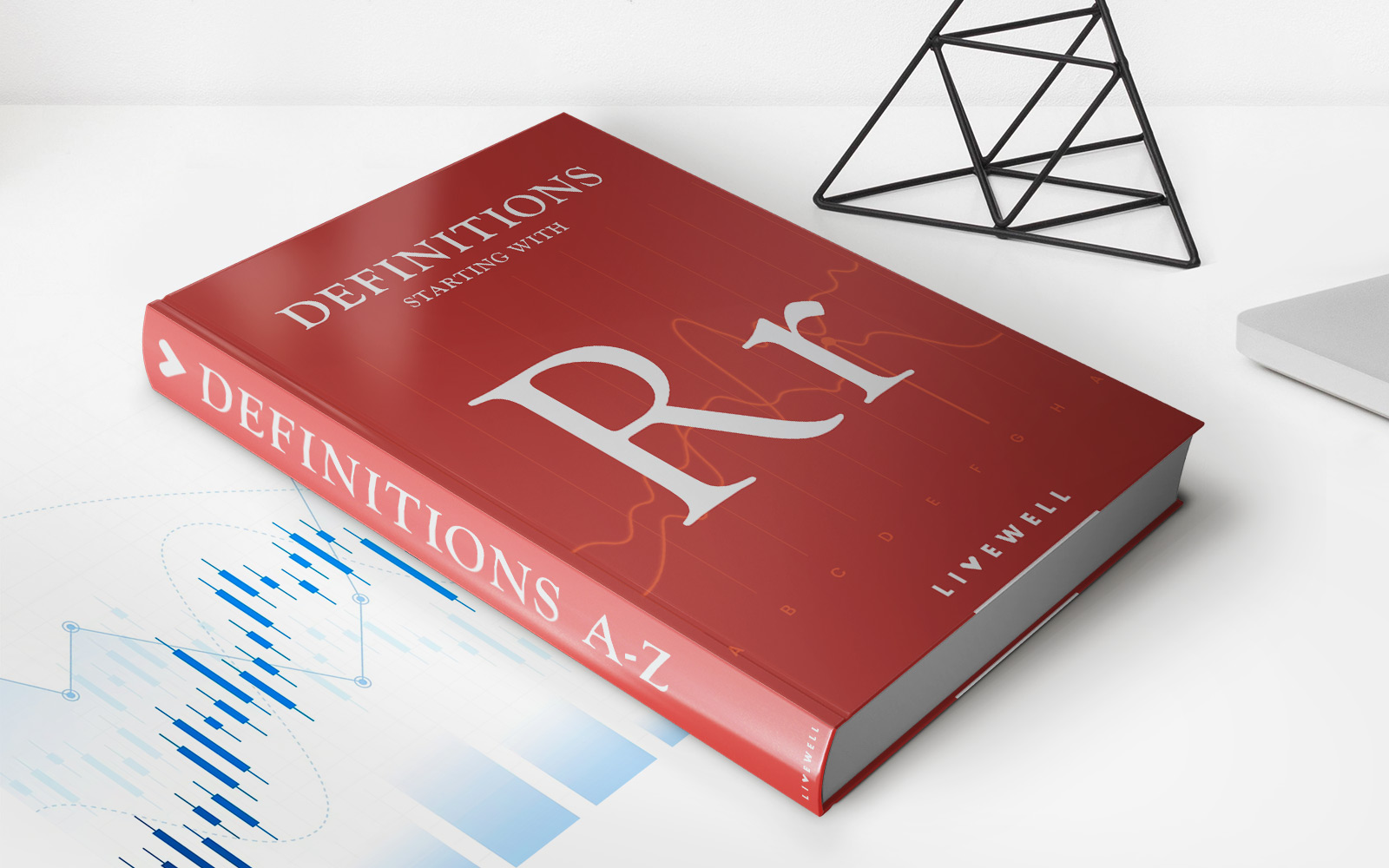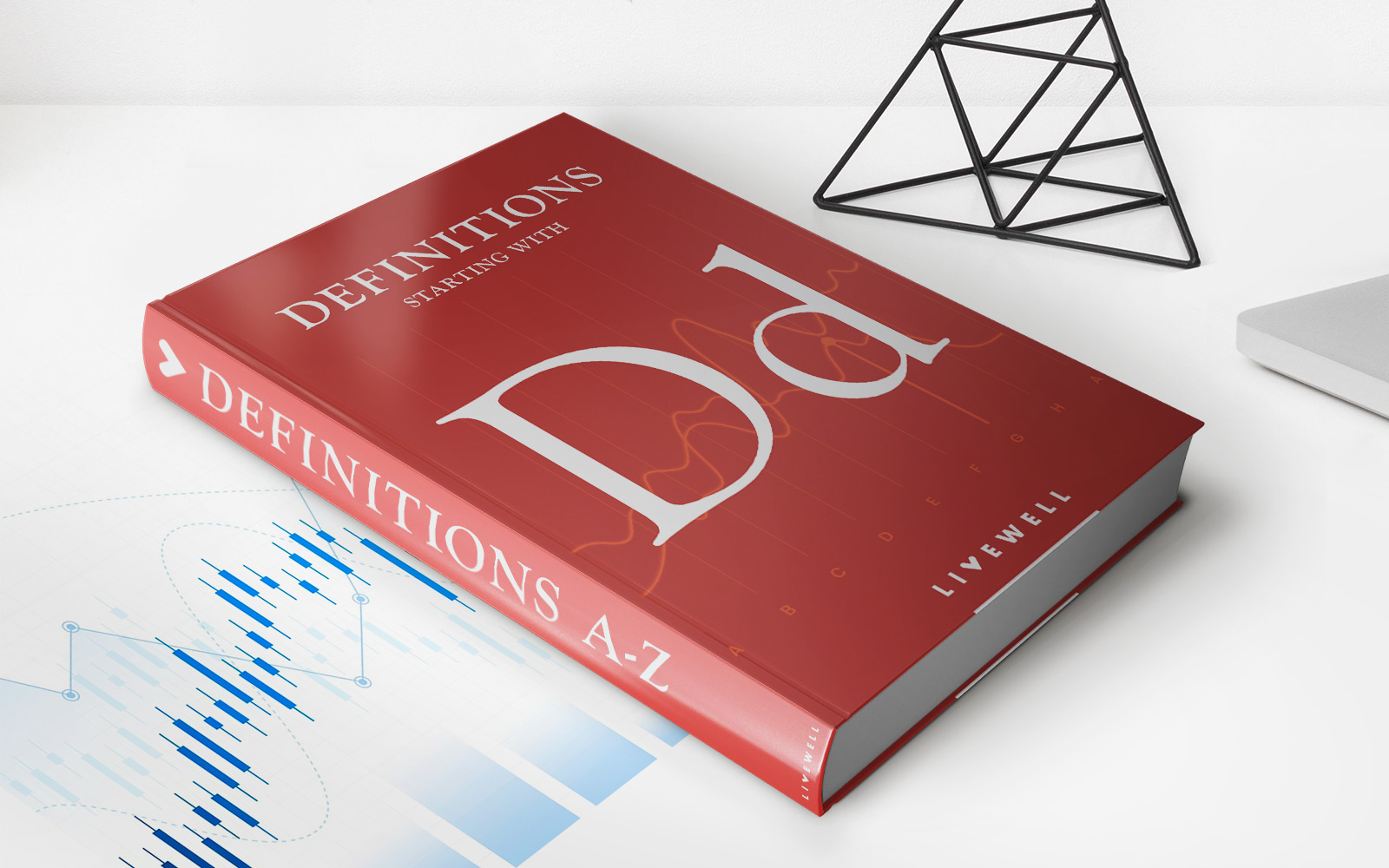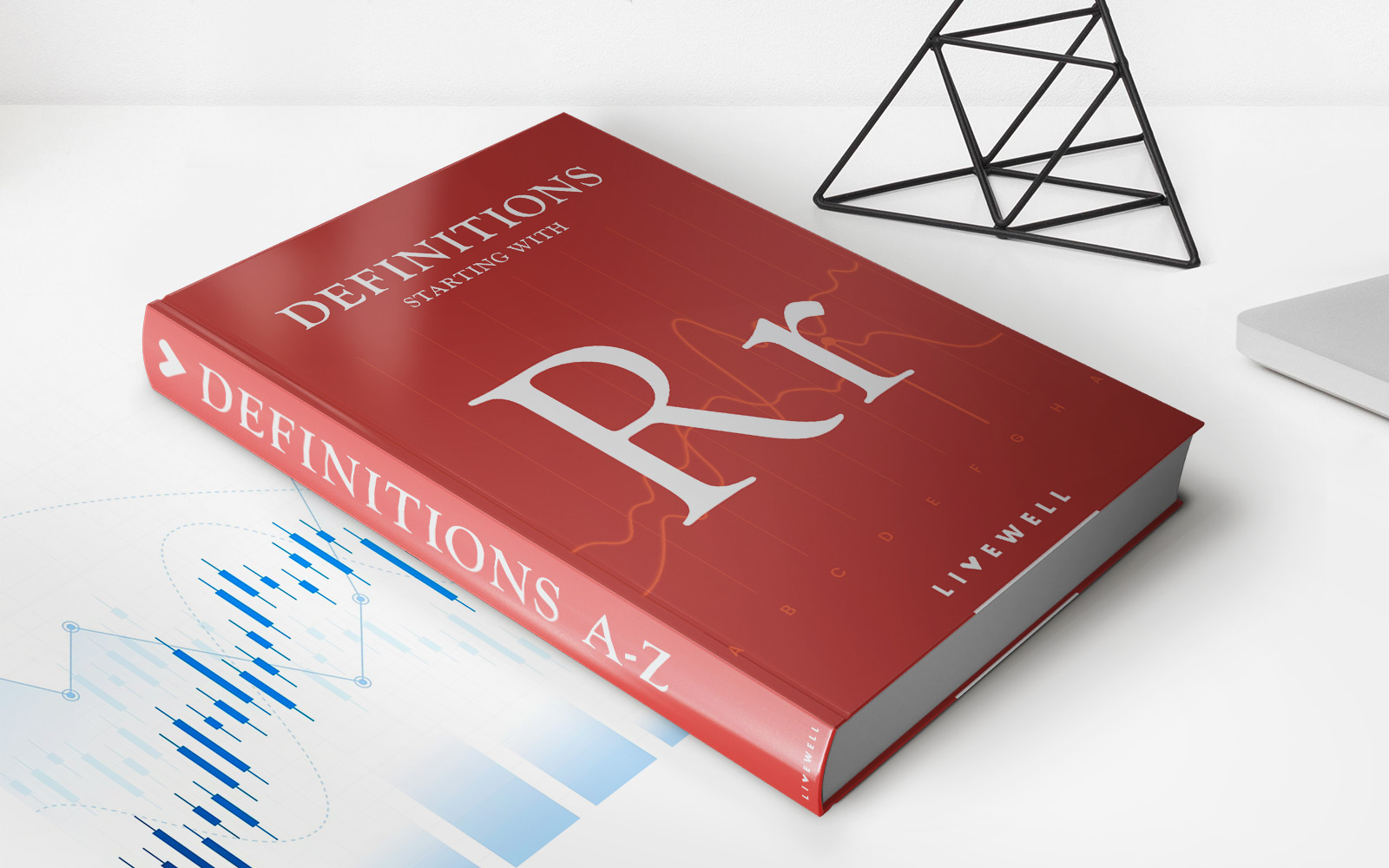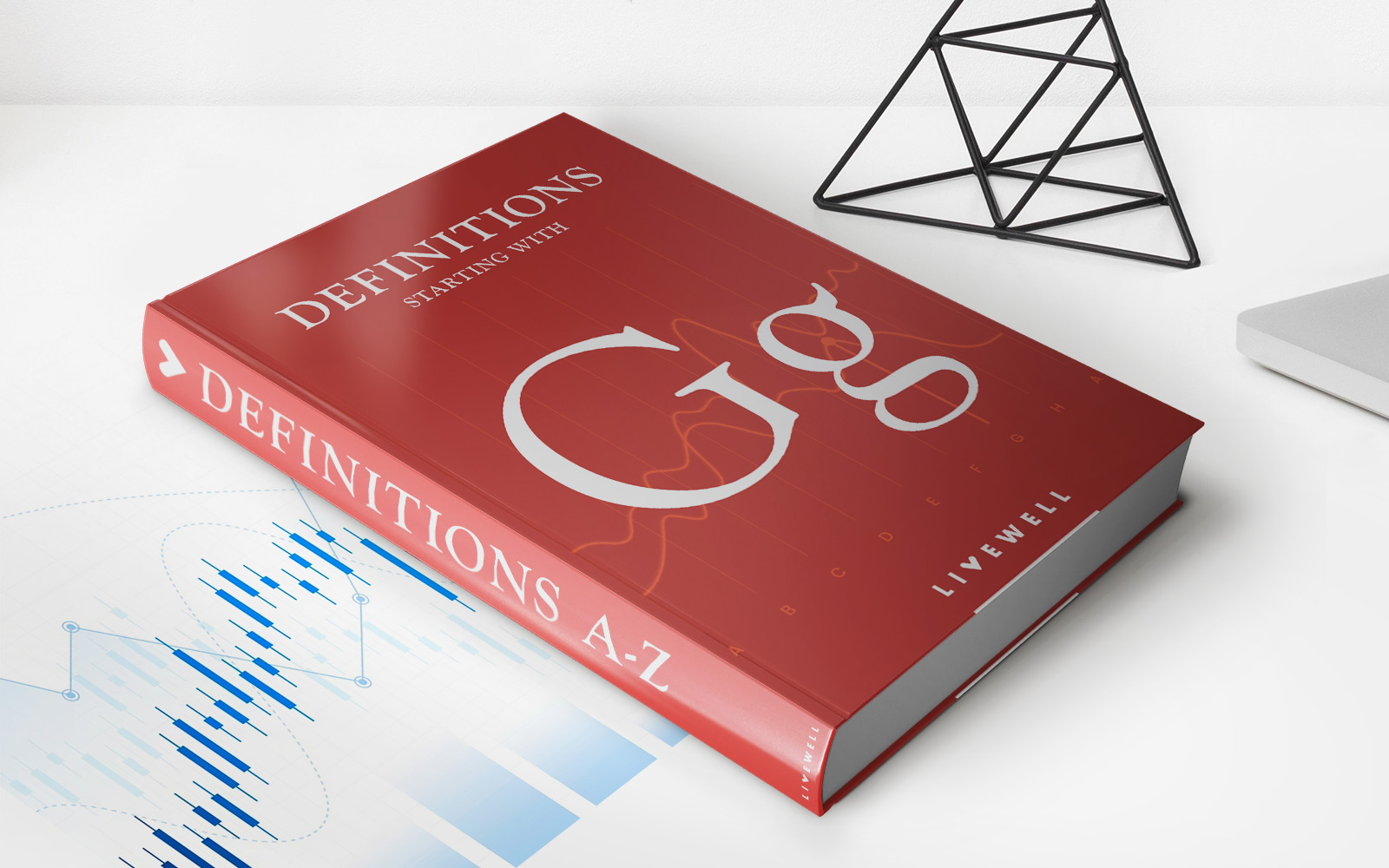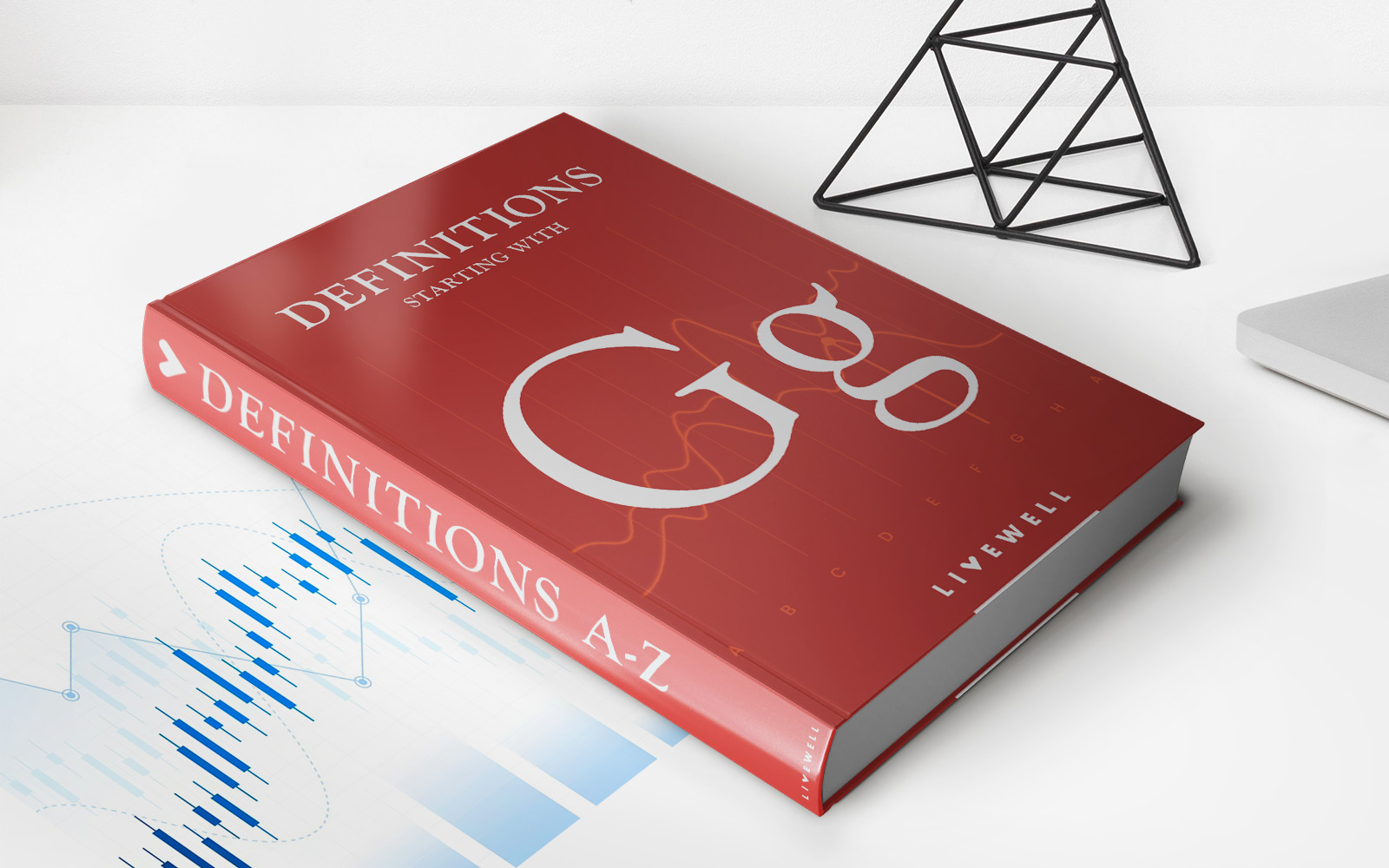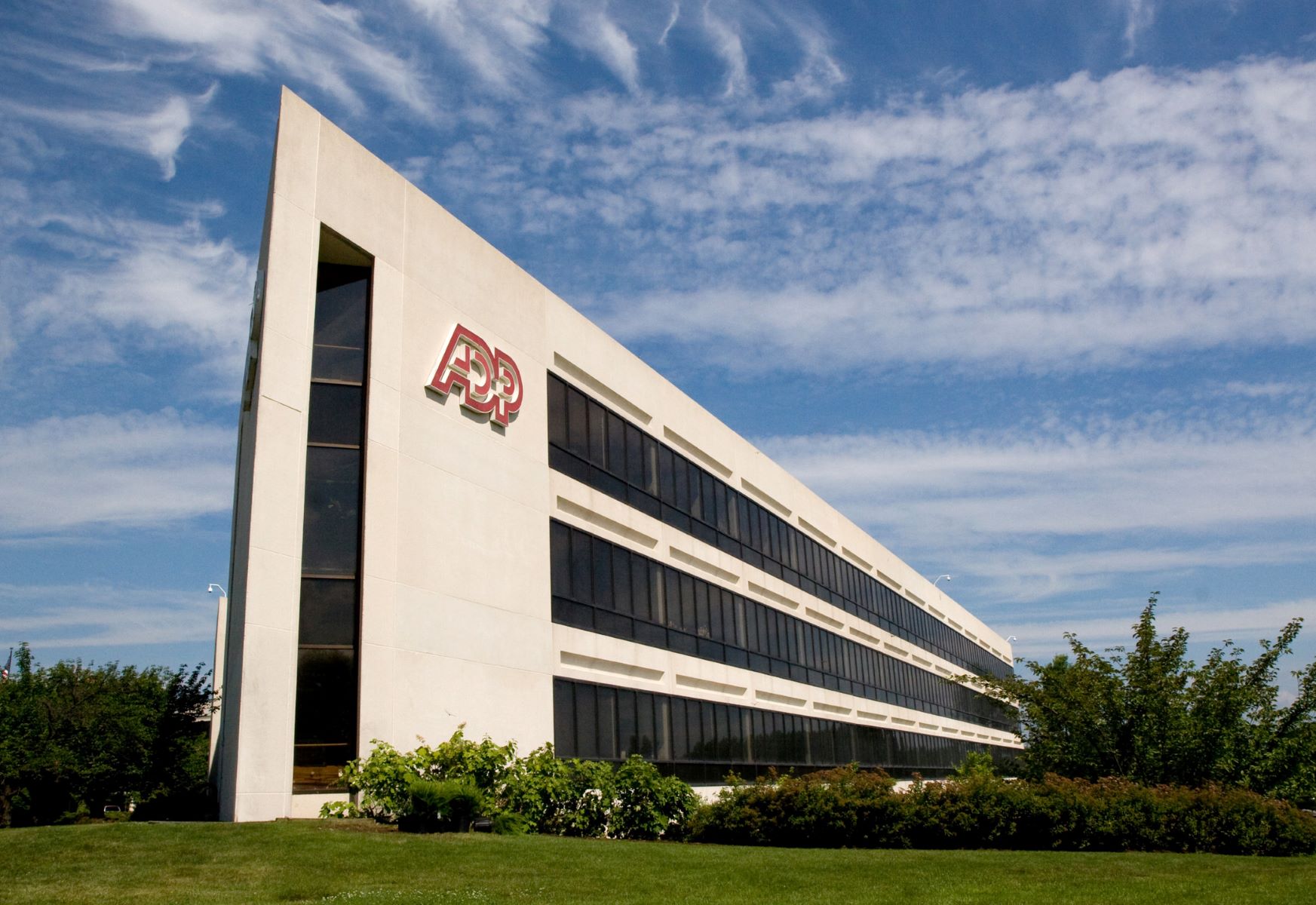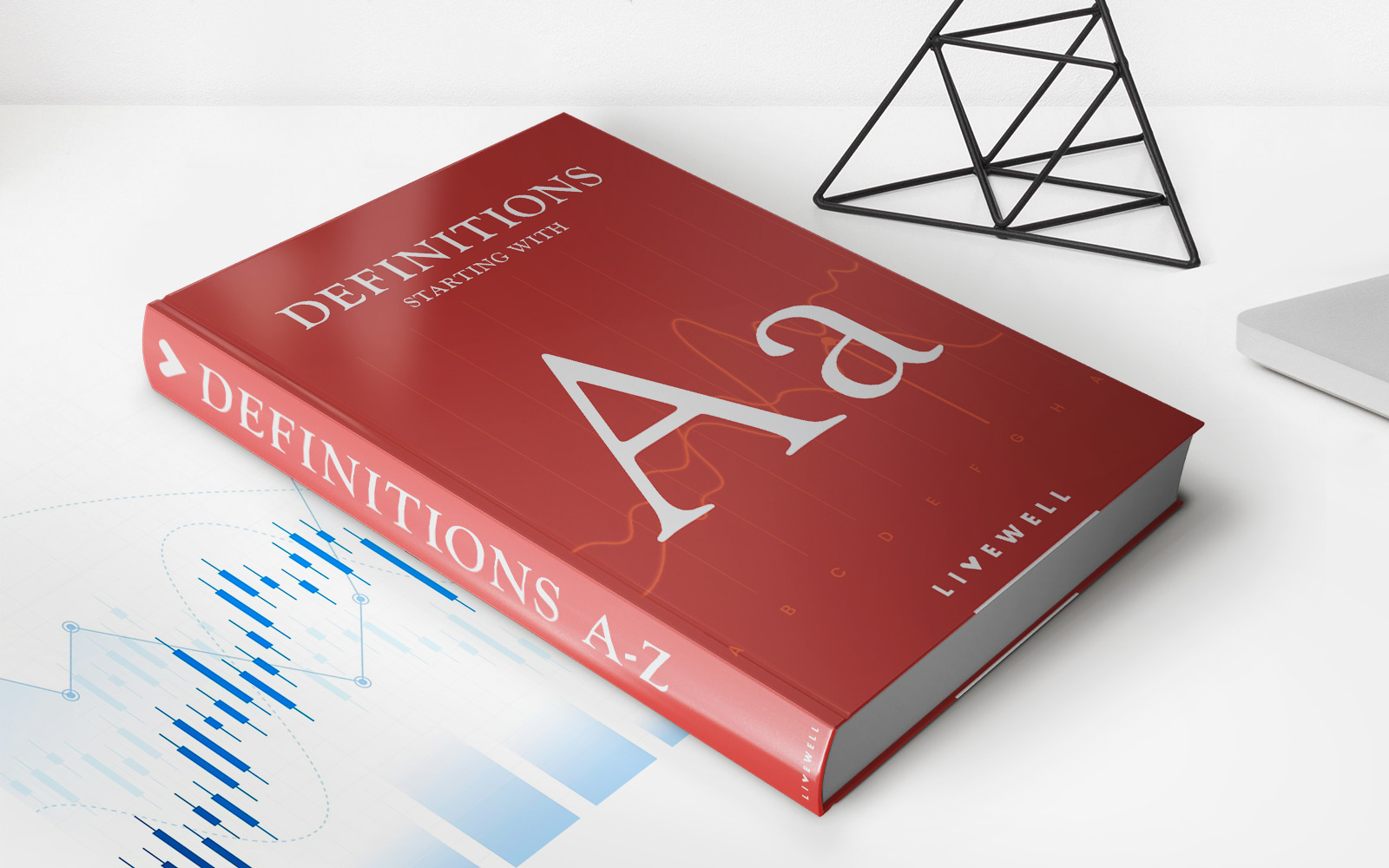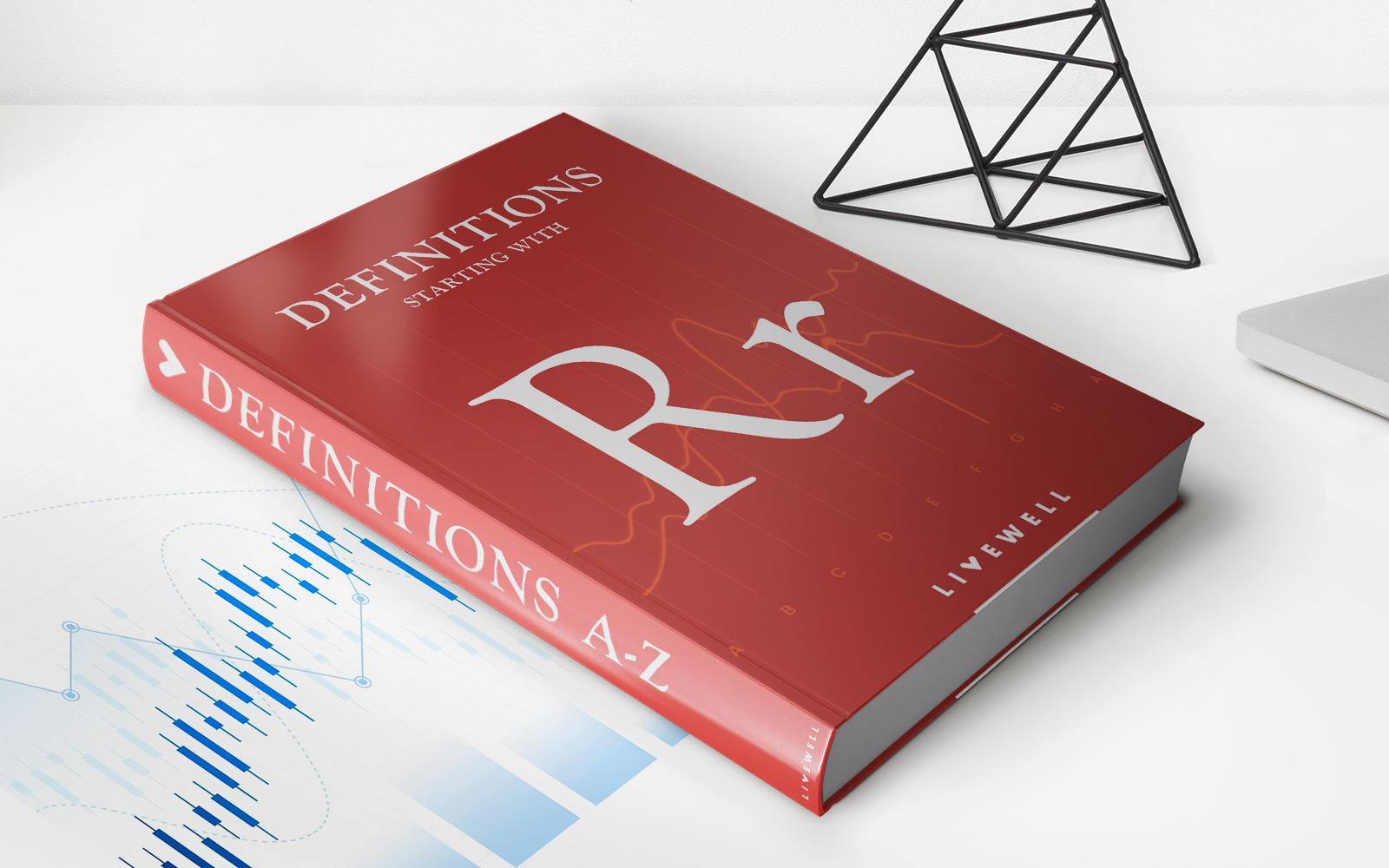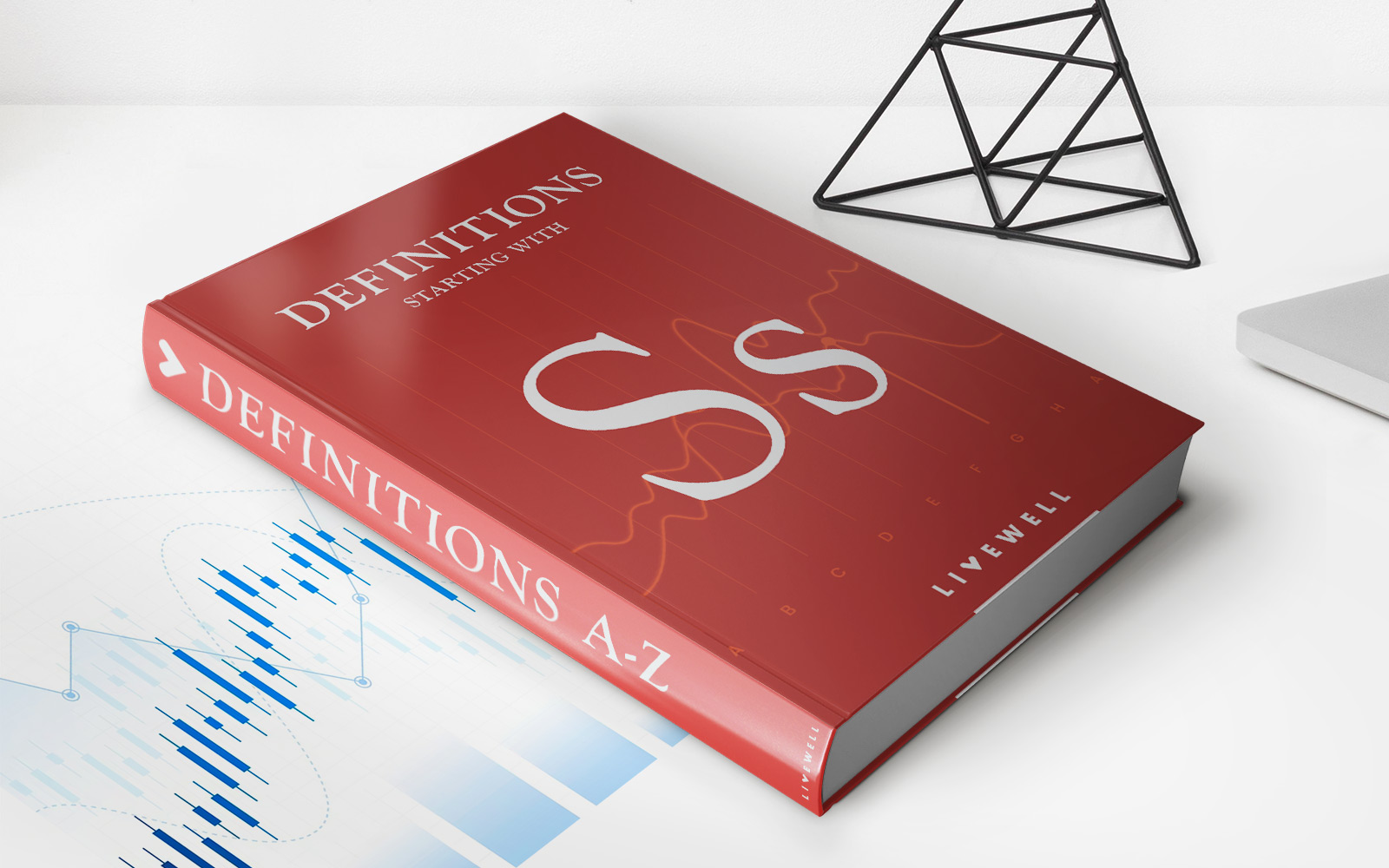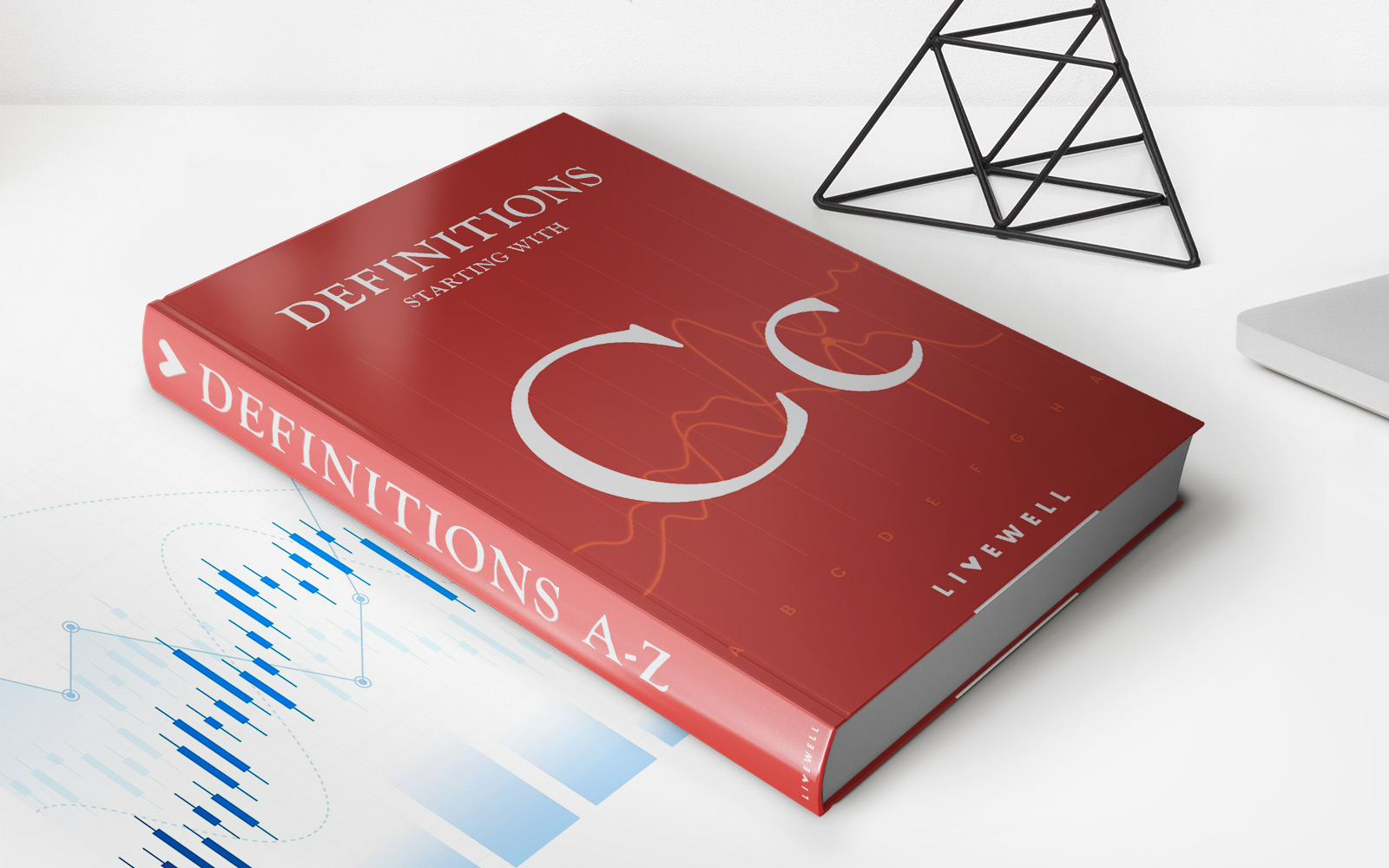

Finance
How To Rollover Pension To IRA
Published: November 27, 2023
Learn how to rollover your pension to an IRA for better control and financial flexibility. Get expert advice on managing your finances and securing your future.
(Many of the links in this article redirect to a specific reviewed product. Your purchase of these products through affiliate links helps to generate commission for LiveWell, at no extra cost. Learn more)
Table of Contents
- Introduction
- Understanding Pension Plans
- Benefits of Rolling Over Pension to an IRA
- Eligibility and Requirements for Rollover
- Choosing the Right Financial Institution for IRA
- Steps to Rollover Pension to an IRA
- Tax Implications and Considerations
- Investment Options for IRA
- Monitoring and Managing Your IRA
- Frequently Asked Questions (FAQs)
- Conclusion
Introduction
Welcome to our comprehensive guide on how to rollover your pension to an Individual Retirement Account (IRA). As retirement planning becomes increasingly important, individuals are seeking ways to maximize their retirement savings and take control of their financial future. One popular option is to rollover their pension funds into an IRA, providing them with more flexibility, investment options, and potential tax advantages.
In this article, we will delve into the details of pension plans and the benefits of rolling them over to an IRA. We will also explore the eligibility and requirements for a rollover, as well as guide you through the process step-by-step. Furthermore, we will discuss the tax implications and considerations involved in this decision, and examine the investment options available within an IRA. Lastly, we will provide answers to some commonly asked questions, helping you make informed decisions about your pension rollover.
It’s important to note that while we strive to provide accurate and up-to-date information, it’s always advisable to consult with a financial advisor or tax professional before making any financial decisions regarding your pension or IRA. Now, let’s begin our journey into the world of pension rollovers and explore how you can take advantage of the benefits an IRA has to offer.
Understanding Pension Plans
Pension plans, also known as employer-sponsored retirement plans, are retirement savings vehicles established by employers to provide financial security for their employees during their retirement years. These plans are designed to help individuals build a nest egg by contributing a portion of their income, which is then invested to accumulate wealth over time.
There are two main types of pension plans: defined benefit plans and defined contribution plans. In a defined benefit plan, the employer guarantees a specific income in retirement based on factors such as years of service, salary, and a predetermined formula. On the other hand, a defined contribution plan, such as a 401(k) or 403(b) plan, allows employees to contribute a portion of their salary on a pre-tax basis, with the employer potentially matching a percentage of the contributions. The funds in these plans are typically invested in a variety of investment options, such as stocks, bonds, and mutual funds.
While pension plans have provided a reliable source of retirement income for many years, there are several drawbacks to consider. One major limitation is the lack of control individuals have over their pension funds. In most cases, the employer determines the investment options and the overall management of the plan. Additionally, if an individual leaves their job before becoming fully vested in the plan, they may not be entitled to the full benefit amount.
Moreover, pension plans are subject to the financial health of the employer. If the company faces financial difficulties or goes bankrupt, there is a risk that the pension funds may not be fully funded or may be reduced. This lack of portability and potential vulnerability has led many individuals to explore other retirement savings options, such as rolling over their pensions to an IRA.
Now that we have a clear understanding of pension plans, let’s explore the benefits of rolling over your pension to an IRA.
Benefits of Rolling Over Pension to an IRA
Rolling over your pension to an Individual Retirement Account (IRA) can offer numerous advantages and greater control over your retirement savings. Here are some key benefits:
- Flexibility and Investment Options: Unlike pension plans, which often have limited investment options determined by the employer, IRAs offer a wide range of investment choices. You can customize your portfolio based on your risk tolerance, investment preferences, and financial goals. With an IRA, you have the freedom to diversify your investments across stocks, bonds, mutual funds, real estate investment trusts (REITs), and more.
- Portability: By rolling over your pension to an IRA, you gain the advantage of portability. If you change jobs or retire, you can maintain your retirement savings in one consolidated account. This eliminates the need to manage multiple pension accounts or rely on your previous employer for updates and administration.
- Control over Withdrawals: With an IRA, you have more control over when and how you withdraw funds. While pension plans typically have specific rules and restrictions regarding disbursements, an IRA provides greater flexibility. You can choose to take regular distributions or make withdrawals as needed, allowing you to better manage your retirement income and potentially reduce tax liabilities.
- Tax Advantages: IRA rollovers can offer tax advantages depending on the type of IRA you choose. With a traditional IRA, contributions may be tax-deductible, allowing you to potentially reduce your taxable income in the year of contribution. Additionally, earnings on investments within the IRA grow tax-deferred until withdrawals are made in retirement. With a Roth IRA, contributions are made with after-tax dollars, but qualified withdrawals are tax-free. Consulting with a tax professional can help you determine the best strategy based on your individual circumstances.
- Inheritance Planning: An IRA offers more flexibility for estate planning and passing on wealth to your beneficiaries. With proper beneficiary designations, your loved ones can potentially inherit your IRA with minimal taxes and continue to grow their inherited IRA over time.
By rolling over your pension to an IRA, you gain greater control, more investment options, and potential tax advantages. However, it’s important to consider the eligibility requirements and the rollover process, which we will explore in the following sections.
Eligibility and Requirements for Rollover
Before you can rollover your pension to an Individual Retirement Account (IRA), it’s essential to understand the eligibility criteria and requirements. Here are some key points to consider:
Employment Status: In most cases, you need to have left your job or retired to be eligible for a pension rollover. If you are still employed, you may have limited options for transferring the funds from your current employer’s pension plan. However, it’s best to consult with your HR department or plan administrator to understand the specific rules and options available to you.
Vesting: Vesting refers to the amount of time you must work for an employer before you become entitled to the full pension benefit. If you are not fully vested in your pension plan, you may only be able to roll over a portion of your accumulated funds. Understanding your vesting status is crucial in determining the amount you can rollover to an IRA.
Eligible Retirement Plans: In general, you can rollover a pension from a defined benefit plan or a defined contribution plan, such as a 401(k) or 403(b), into an IRA. However, some pension plans may have specific restrictions or limitations on rollovers. It’s important to review the terms of your pension plan and consult with a financial advisor or tax professional to ensure compliance with IRS regulations.
Time Limit: There is typically a time limit for initiating the rollover after leaving your job or retiring. The IRS requires you to complete the rollover process within 60 days to avoid potential tax penalties. However, it’s recommended to opt for a direct rollover, also known as a trustee-to-trustee transfer, where the funds are transferred directly from your pension plan to the IRA custodian. This eliminates the risk of missing the rollover window and minimizes any tax consequences.
IRA Account Type: When rolling over your pension to an IRA, you have the option to choose either a traditional IRA or a Roth IRA. With a traditional IRA, your contributions may be tax-deductible, and earnings grow tax-deferred until withdrawals are made in retirement. With a Roth IRA, contributions are made with after-tax dollars, but qualified withdrawals in retirement are tax-free. Consider your current and future tax situation, as well as your long-term financial goals, when deciding which IRA account type is most suitable for your rollover.
It’s important to note that the rules and regulations surrounding pension rollovers can be complex, and individual circumstances may vary. Therefore, it is always advisable to consult with a financial advisor or tax professional who can provide personalized guidance based on your specific situation.
Choosing the Right Financial Institution for IRA
When rolling over your pension to an Individual Retirement Account (IRA), selecting the right financial institution is essential. The institution you choose will act as the custodian of your IRA, responsible for holding and managing your retirement funds. Here are some factors to consider when selecting a financial institution for your IRA:
Reputation and Trustworthiness: Look for a reputable financial institution with a strong track record and a solid reputation in the industry. Research their history, reviews, and ratings to ensure they are trustworthy and have a history of providing reliable services to their clients.
Investment Options: Consider the range of investment options available through the financial institution. Look for a diverse selection of investment options, including stocks, bonds, mutual funds, ETFs, and other assets that align with your investment goals and risk tolerance.
Costs and Fees: Compare the fees and expenses associated with the IRA custodian. Some institutions may charge administrative fees, annual maintenance fees, or transaction fees. Look for transparent fee structures and consider the impact of these costs on your long-term retirement savings.
Customer Service and Support: Evaluate the level of customer service and support provided by the financial institution. Consider factors such as the availability of knowledgeable representatives, online account management tools, research resources, and educational materials. Prompt and reliable customer service can be crucial when you have questions or need assistance with your IRA.
Technology and Digital Tools: In today’s digital age, it’s important to consider the technological capabilities of the financial institution. Look for an institution that offers user-friendly online platforms and mobile apps for easy access to your IRA account, real-time tracking of investments, and the ability to make transactions securely.
IRA Account Types: Ensure that the financial institution offers the type of IRA account that aligns with your preferences and goals. Whether you choose a traditional IRA or a Roth IRA, the institution should provide the account type that suits your tax situation and long-term retirement strategy.
Additional Services: Consider any additional services or benefits that the financial institution may offer. Some institutions may provide retirement planning tools, educational resources, or access to financial advisors who can offer personalized guidance on your retirement journey. These additional services can enhance your overall experience and support your financial goals.
Take the time to research and compare multiple financial institutions to find the one that best meets your needs. Remember, this decision can have a significant impact on the growth and management of your retirement savings, so it is essential to choose a reputable and reliable institution that aligns with your financial goals and priorities.
Steps to Rollover Pension to an IRA
Rolling over your pension to an Individual Retirement Account (IRA) involves several steps to ensure a smooth and successful transfer. Follow these steps to initiate the rollover process:
- Evaluate Your Pension Plan: Review the terms and provisions of your pension plan to understand the options and limitations for rollovers. Consult with your HR department or plan administrator to gather the necessary information.
- Choose an IRA Custodian: Select a reputable financial institution or brokerage firm to serve as the custodian of your IRA. Consider factors such as investment options, fees, customer service, and technological capabilities.
- Open an IRA Account: Contact the chosen financial institution and open an IRA account. Determine whether you want a traditional IRA or a Roth IRA based on your tax situation and long-term goals.
- Complete the Rollover Form: Obtain the necessary rollover forms from both your pension plan provider and the IRA custodian. Follow the instructions provided to complete the required information accurately.
- Choose Rollover Method: Decide on the rollover method: direct rollover or indirect rollover. A direct rollover involves transferring the funds directly from your pension plan to the IRA custodian to avoid tax consequences. An indirect rollover involves receiving the funds personally and depositing them into the IRA account within 60 days to avoid taxes and penalties.
- Submit Rollover Request: Submit the completed rollover form to your pension plan provider and request the rollover. Ensure that you follow any specific procedures outlined by the pension plan to initiate the transfer.
- Receive and Deposit Funds: If you opted for a direct rollover, the pension plan provider will transfer the funds directly to your IRA custodian. If you chose an indirect rollover, you will receive a distribution check, which must be deposited into the IRA account within 60 days to avoid tax implications.
- Invest and Manage Your IRA: Once the funds are deposited into your IRA, work with your chosen financial institution or brokerage firm to invest and manage your retirement savings. Utilize the investment options and tools available to build a diversified portfolio that aligns with your financial goals and risk tolerance.
Throughout the rollover process, it’s crucial to maintain accurate records and documentation for tax purposes. Keep copies of all completed forms, statements, and correspondence related to the pension rollover.
Remember, consult with a financial advisor or tax professional if you have specific questions or need personalized guidance based on your unique situation. They can provide valuable insights and ensure that you navigate the rollover process correctly.
Tax Implications and Considerations
When rolling over your pension to an Individual Retirement Account (IRA), it’s important to understand the tax implications and considerations involved. Here are some key points to keep in mind:
Traditional IRA Rollover: If you choose to roll over your pension to a traditional IRA, the funds transferred are not considered taxable income. However, keep in mind that when you make withdrawals from the traditional IRA in retirement, the amount withdrawn will be subject to income tax at your ordinary income tax rate.
Roth IRA Rollover: Rollovers from a pension plan to a Roth IRA are taxable in the year of the rollover. This means that the transferred amount will be included as taxable income on your tax return. However, qualified distributions from a Roth IRA, including both contributions and earnings, are tax-free in retirement. Consider your current and future tax situations before deciding on a Roth IRA rollover.
Timing of Rollover: To avoid tax consequences and potential penalties, it is crucial to complete the rollover process within 60 days if you choose the indirect rollover method. If the funds are not deposited into the IRA within this time frame, it may be treated as a distribution subject to taxes and early withdrawal penalties if you are under the age of 59 1/2.
Taxation of Investment Gains: Once the pension funds are transferred to an IRA, any investment gains within the IRA grow tax-deferred or tax-free, depending on the account type. This allows your retirement savings to potentially compound and grow more efficiently over time.
Required Minimum Distributions (RMDs): Traditional IRAs are subject to required minimum distributions (RMDs) once you reach the age of 72 (70 1/2 if you were born prior to July 1, 1949). These distributions are taxable and must be taken annually to avoid penalties. Roth IRAs, on the other hand, do not require RMDs during your lifetime.
State Taxes: Consider the potential impact of state taxes on your pension rollover and IRA distributions. State tax laws vary, and some states may tax IRA distributions differently or have no state income tax at all.
Professional Guidance: It’s crucial to consult with a tax advisor or financial planner who can provide personalized advice based on your specific tax situation and retirement goals. They can help you navigate the tax implications of a pension rollover and ensure compliance with tax laws.
Understanding the tax implications and considerations of a pension rollover is crucial for making informed decisions about your retirement savings. Take the time to assess your individual circumstances and consult with professionals to optimize your tax strategy and maximize the benefits of your IRA.
Investment Options for IRA
One of the key advantages of rolling over your pension to an Individual Retirement Account (IRA) is the wide array of investment options available to you. Unlike traditional pension plans that often have limited investment choices, an IRA provides the flexibility to customize your portfolio based on your financial goals and risk tolerance. Here are some common investment options to consider:
- Stocks: Investing in individual stocks offers the potential for high returns but also carries higher risk. You can choose to invest in established companies or smaller, growth-oriented stocks to diversify your portfolio.
- Bonds: Bonds are fixed-income securities that pay interest over a specified period. They are considered more conservative investments that provide stability and income. Bonds can be issued by governments, municipalities, or corporations.
- Mutual Funds: Mutual funds pool money from multiple investors to invest in a diversified portfolio of stocks, bonds, or other securities. They are managed by professional fund managers and offer instant diversification.
- Exchange-Traded Funds (ETFs): Similar to mutual funds, ETFs contain a basket of securities and can be bought and sold on stock exchanges. They provide diversification and are known for their low expenses and liquidity.
- Real Estate Investment Trusts (REITs): REITs allow you to invest in real estate without directly owning property. These trusts pool money from investors to purchase and manage income-generating properties, such as commercial buildings, apartments, or shopping centers.
- Index Funds: Index funds track a specific market index, such as the S&P 500. They offer broad market exposure and low fees. Investing in index funds can be a passive strategy that aims to match the performance of the chosen index.
- Commodities: Investing in commodities, such as gold, silver, oil, or agricultural products, allows for diversification and protection against inflation. Commodities can act as a hedge against market volatility.
- Target-Date Funds: Target-date funds are designed for individuals with specific retirement dates in mind. These funds automatically adjust the asset allocation based on your target retirement year, gradually becoming more conservative as you approach retirement.
It’s important to diversify your investments to reduce risk and capture potential growth opportunities. A well-rounded portfolio may include a mix of stocks, bonds, and other asset classes that align with your risk tolerance and financial objectives.
Consider your time horizon, investment knowledge, and comfort with risk when selecting the investment options for your IRA. It might be beneficial to consult with a financial advisor who can assess your goals, risk tolerance, and investment preferences to create a tailored investment strategy for your IRA.
Monitoring and Managing Your IRA
Once you have rolled over your pension to an Individual Retirement Account (IRA), it’s important to actively monitor and manage your account to ensure that your retirement savings grow and align with your goals. Here are some essential steps to effectively manage your IRA:
Regular Account Review: Set aside time periodically to review your IRA account. Assess the performance of your investments, ensure that they align with your risk tolerance and financial objectives, and make any necessary adjustments. This might involve rebalancing your portfolio to maintain your desired asset allocation.
Stay Informed: Keep up-to-date with market and economic trends that may impact your IRA investments. Stay informed about the performance of individual stocks, mutual funds, or other assets in your portfolio. This knowledge will help you make informed decisions regarding potential buy/sell actions or adjustments to your investment strategy.
Utilize Technology: Leverage the technology and online tools provided by your IRA custodian. Many financial institutions offer user-friendly platforms that allow you to access your account, monitor investments in real-time, track performance, and execute transactions. Take advantage of these tools to simplify and streamline the management of your IRA.
Contribute Regularly: If eligible, consider making regular contributions to your IRA. Contributing annually or consistently throughout the year can help boost your retirement savings, benefit from potential tax advantages, and take advantage of compounding growth over time. Consult with your financial advisor or tax professional to determine the maximum contribution limits and any tax implications.
Plan for Required Minimum Distributions (RMDs): Traditional IRAs are subject to RMDs once you reach the age of 72 (70 1/2 if you were born prior to July 1, 1949). Familiarize yourself with the RMD rules and ensure that you take the required distributions to avoid penalties. Consult with a tax advisor or financial planner to devise a strategy that aligns with your retirement goals and tax situation.
Monitor Tax Implications: Stay informed about changes to tax laws and regulations that may impact your IRA. Consider consulting with a tax professional to ensure that you maximize your tax advantages and minimize any potential tax liabilities associated with your IRA.
Regular Communication with Financial Advisor: Maintain open communication with your financial advisor or investment professional. They can provide guidance, answer your questions, and help you navigate any complexities related to your IRA management and investment strategy.
Remember that managing your IRA is an ongoing process that requires regular review, research, and informed decision-making. Stay proactive in monitoring your investments, educating yourself about relevant financial matters, and seeking professional guidance when needed. By actively managing your IRA, you can optimize your retirement savings and work towards achieving your long-term financial goals.
Frequently Asked Questions (FAQs)
Here are some commonly asked questions about rolling over a pension to an Individual Retirement Account (IRA):
- Can I roll over my pension to an IRA while still employed?
- Can I roll over a pension from a defined benefit plan to an IRA?
- Are there taxes and penalties when rolling over a pension to an IRA?
- What is the difference between a traditional IRA and a Roth IRA?
- Can I combine multiple pension plans into one IRA?
- Can I access my IRA funds before retirement?
In most cases, you cannot roll over your pension to an IRA while still employed with the same employer. However, rules may vary, and it’s best to consult with your HR department or plan administrator to understand your specific options.
Yes, you can roll over a pension from a defined benefit plan to an IRA. This allows you to take control of your retirement savings and potentially gain more flexibility with investment choices and distribution options.
There are usually no taxes or penalties if you choose a direct rollover, also known as a trustee-to-trustee transfer. However, if you opt for an indirect rollover and personally receive the funds before depositing them into the IRA, you may face taxes and potential penalties if you fail to complete the rollover within 60 days.
A traditional IRA allows for tax-deductible contributions, and the earnings grow tax-deferred until withdrawals are made in retirement, which are then taxed as ordinary income. In contrast, a Roth IRA requires after-tax contributions, but qualified withdrawals in retirement are tax-free. The choice between the two depends on factors such as current and future tax situations.
Yes, you can combine multiple pension plans into one IRA, as long as they are eligible for rollover. Consolidating your pensions into a single IRA can simplify management and provide a clearer overview of your retirement savings.
With a traditional IRA, withdrawals before the age of 59 1/2 may be subject to a 10% early withdrawal penalty, in addition to income taxes. However, certain exceptions exist for penalty-free withdrawals, such as for qualified education expenses, first-time homebuyers, or medical expenses. Roth IRAs offer more flexibility, allowing contributions to be withdrawn penalty-free at any time, and earnings may also be withdrawn tax-free in retirement.
These are general answers to common questions about pension rollovers to IRAs. However, individual circumstances may vary, and it’s crucial to consult with a financial advisor or tax professional for personalized guidance based on your situation.
Conclusion
Rolling over your pension to an Individual Retirement Account (IRA) offers numerous benefits and greater control over your retirement savings. By understanding the intricacies of pension plans, eligibility requirements, and the rollover process, you can take advantage of the flexibility and investment options that IRAs provide.
By choosing the right financial institution as your IRA custodian, you can ensure a seamless and reliable management experience. Regularly monitoring and managing your IRA allows you to make informed decisions, adapt to market changes, and maximize the growth potential of your retirement savings.
Consider the tax implications and considerations associated with pension rollovers, as they play a crucial role in determining the long-term outcome of your IRA. Planning for required minimum distributions and staying informed about changes in tax laws are essential aspects of managing your IRA effectively.
Remember, each individual’s financial situation is unique, and it’s important to consult with a financial advisor or tax professional who can provide personalized guidance based on your specific circumstances and retirement goals.
By taking proactive steps, making informed decisions, and staying engaged in the management of your IRA, you can pave the way for a secure and fulfilling retirement. Seize the opportunities that rolling over your pension to an IRA presents, and embark on a journey towards financial freedom and peace of mind in your golden years.

